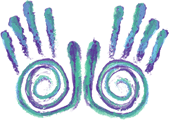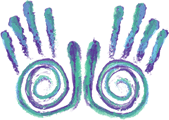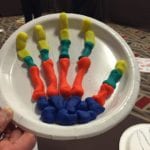Paxson (Pax) Parsons, a 55-year-old Vietnam Veteran, is dying of lung cancer. Pax is enrolled with The Hospice and receiving care at a quintessential Florida ranch-style house that he bought and refurbished shortly before his cancer was diagnosed.
He lives alone, visited by a circle of friends, but plans to return to the Bay Pines hospice unit when he gets closer to the end. Pax explains his plans and his history with the VA on a visit to his home with his hospice counselor, Harriet.
He projects a striking image with his shaved head, piercing eyes, rainbow-striped kimono, gold neck chains and a nasal cannula hooked around his ears. The cannula is attached to an enormous length of rubber tubing, which allows him to wander freely around his house and back to his pool while remaining connected to the oxygen dispenser.
Pax was 21 years old when he was sent to Vietnam. “When we were flying in, they told us to put our heads down. Well, it is a big deal when you start getting shot at,” he says. Pax returned stateside in 1970 with physical and psychological disabilities that required care from VA. In those days, he says, “you really had to fight for what you needed.”
Indeed, Parson was eventually confined to a psychiatric hospital and later treated for drug addiction. He has been in recovery for 20 years and is enrolled in a VA stress management program for PTSD. “I’ve gotten better, thanks to the Bay Pines VAMC. They helped me because they treated me like a person,” he observes.
“My life really began after Vietnam. ‘Nam was bad, but it opened my eyes,” Pax says. “Once you’ve been in a war zone, your life changes like that (snap). I was born Southern Baptist and I was gay. Surprisingly, my family is very accepting of me now. I love who I am and who I became. Even my two daughters have come a long way with that,” he relates.“I went into the Carolina mountains, got my life together and got off drugs,” he continues. He explored spiritual traditions, including Native American healing—he’s part Cherokee—spirit guides and the 12-step acknowledgement of a higher power. “I discovered a whole new me—Pax, not Paxson. I left Paxson back in Vietnam. He’s scary. You don’t want to meet him,” he warns.
Eventually, Pax took charge of his own life, helping to establish an HIV volunteer program in Delaware in the 1980s. This experience of working with dying people changed his view of dying. “That’s why I’m not afraid of death. Because of the whole war issue and what Iwent through, it made me feel the pain of other people,” he says.
Pax has since helped many Veterans negotiate their benefits and complete the necessary paperwork to obtain VA services, while supporting others to become more accepting of who they are.
He encourages other Veterans with life-threatening illnesses to be open to hospice care. “It’s a lifeline,” he says. You’ll be a lot more comfortable. It’s not about dying—that part’s up to you. Hospice is just a helping hand, helping you live with the disease. It’s helped me a lot.”Pax never made it to the Bay Pines VAMC unit. His lung cancer advanced more quickly than expected, so his partner, Don, and his sister, who was staying with him, decided to try to keep him at home. On March 14, a month after the writer’s visit, he was still up and walking around the serene, art-filled home that gave him so much comfort, although increased breathing difficulties and inability to swallow pills signaled a decline. The next day he died at home, comfortably and relatively free of pain, in the company of loved ones and attended by his spirit guides.
This story is featured in VA Transforms End-of-Life Care for Veterans.
Thank those who unselfishly given themselves to their country.








 The Healing Place LLC helps all ages to find relief from chronic pain, chronic digestive problems and balance hormones naturally. We practice COVID19 safety. Don’t forget to check on our online school HealingPlaceEnergySchool.com. Thank you.
The Healing Place LLC helps all ages to find relief from chronic pain, chronic digestive problems and balance hormones naturally. We practice COVID19 safety. Don’t forget to check on our online school HealingPlaceEnergySchool.com. Thank you.
Recent Comments